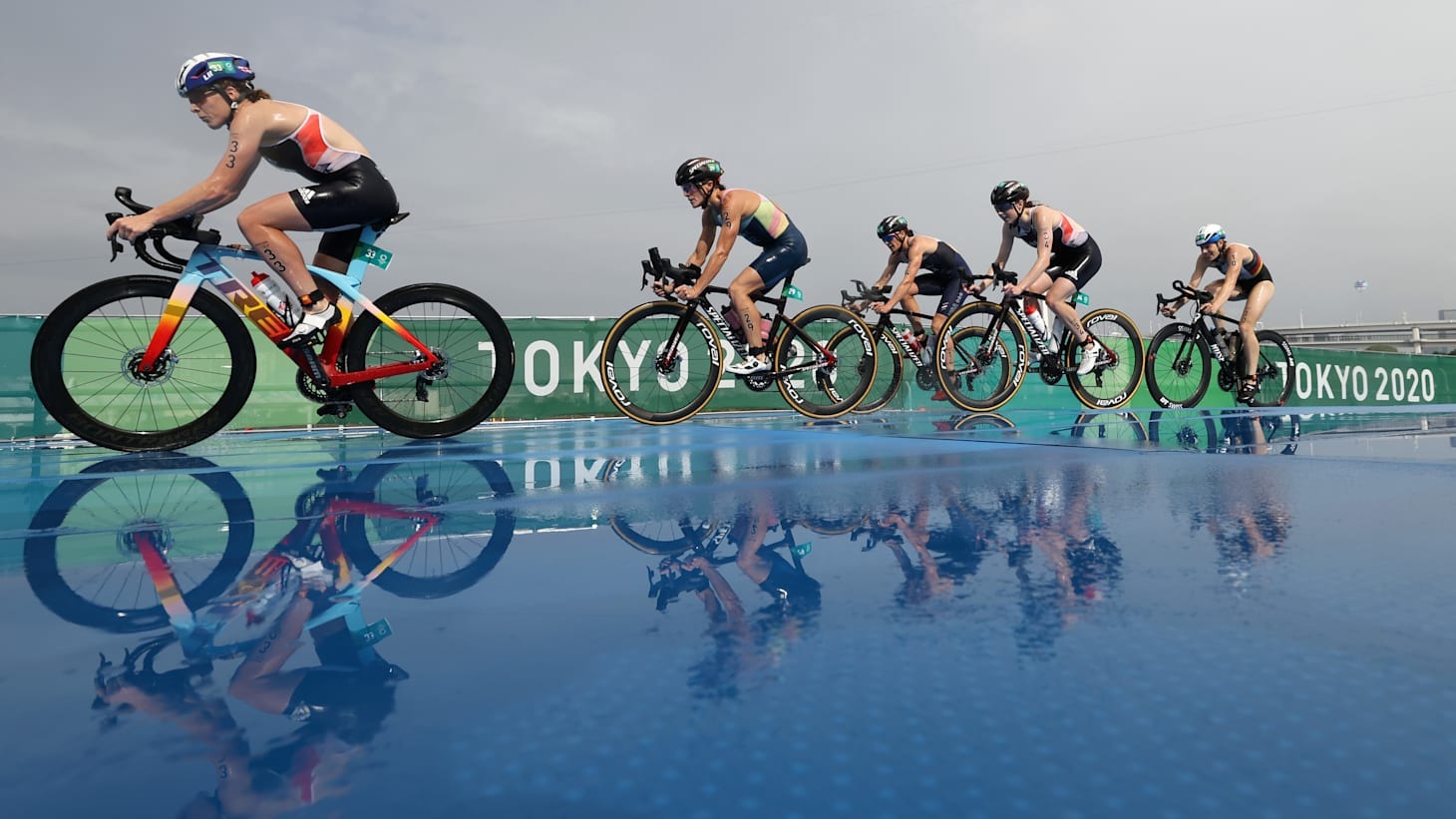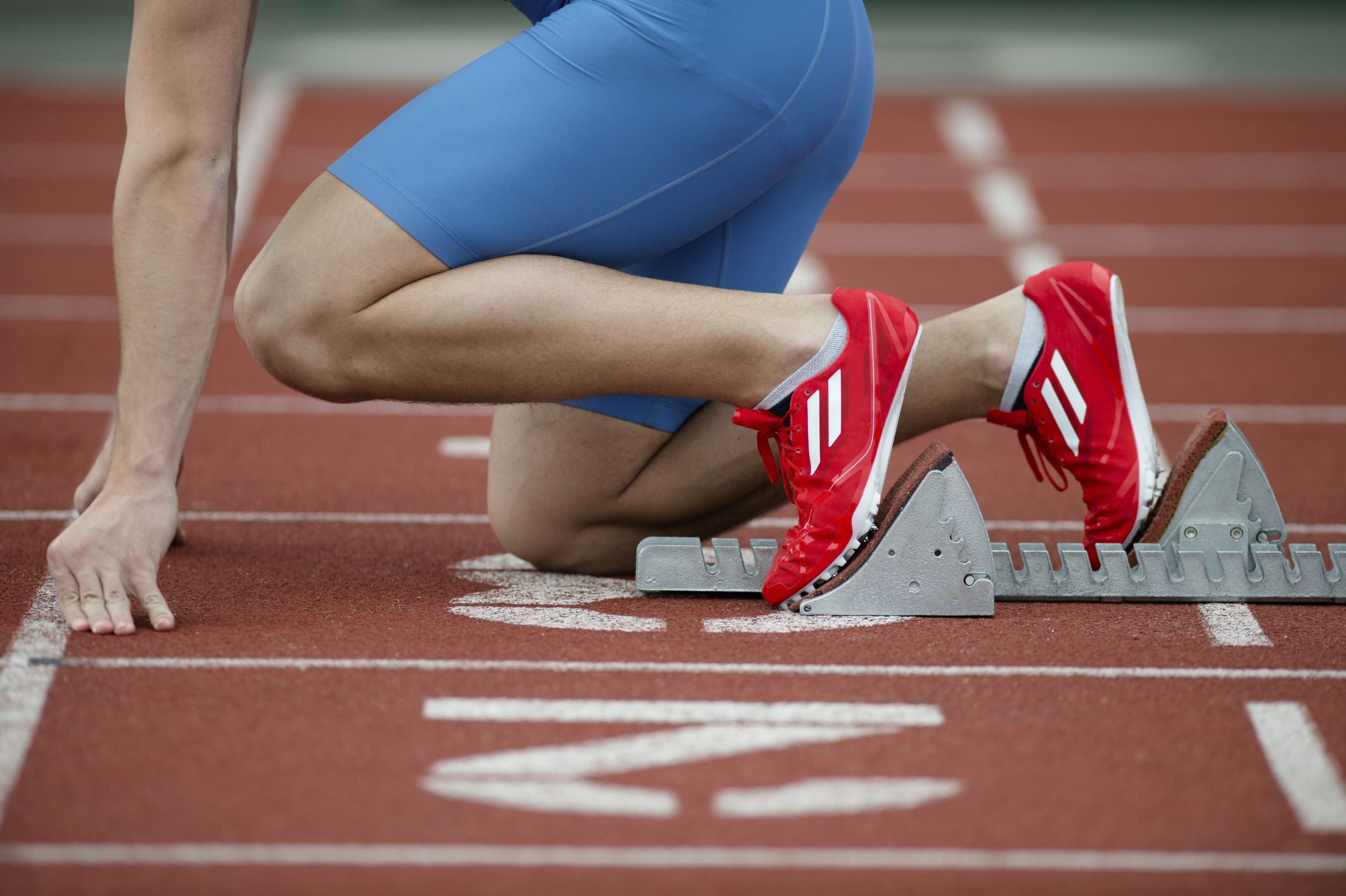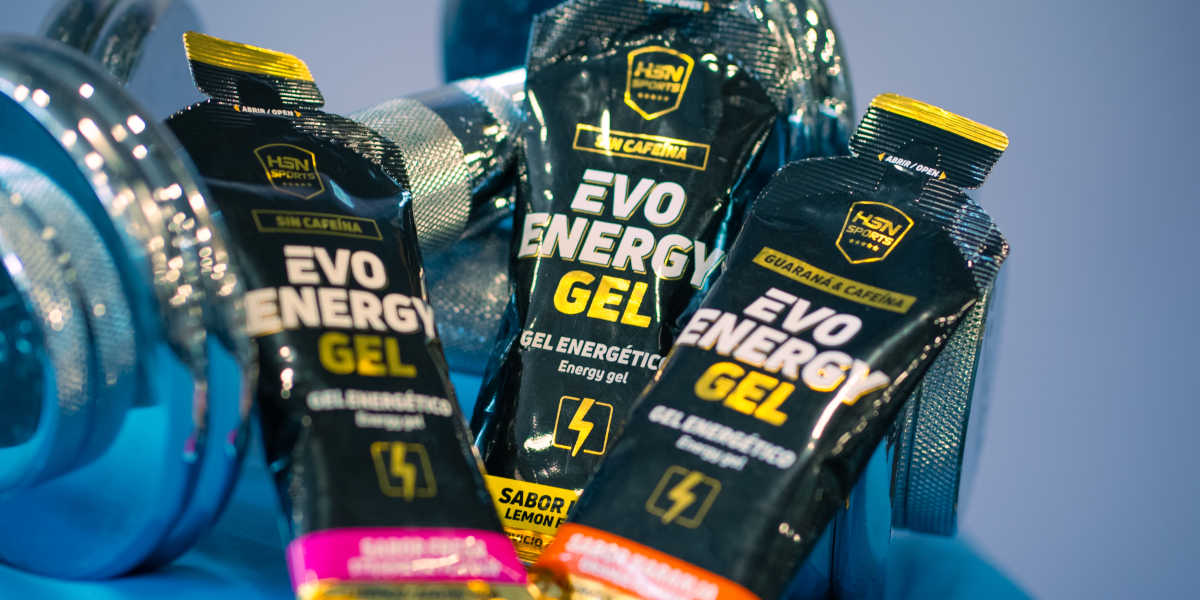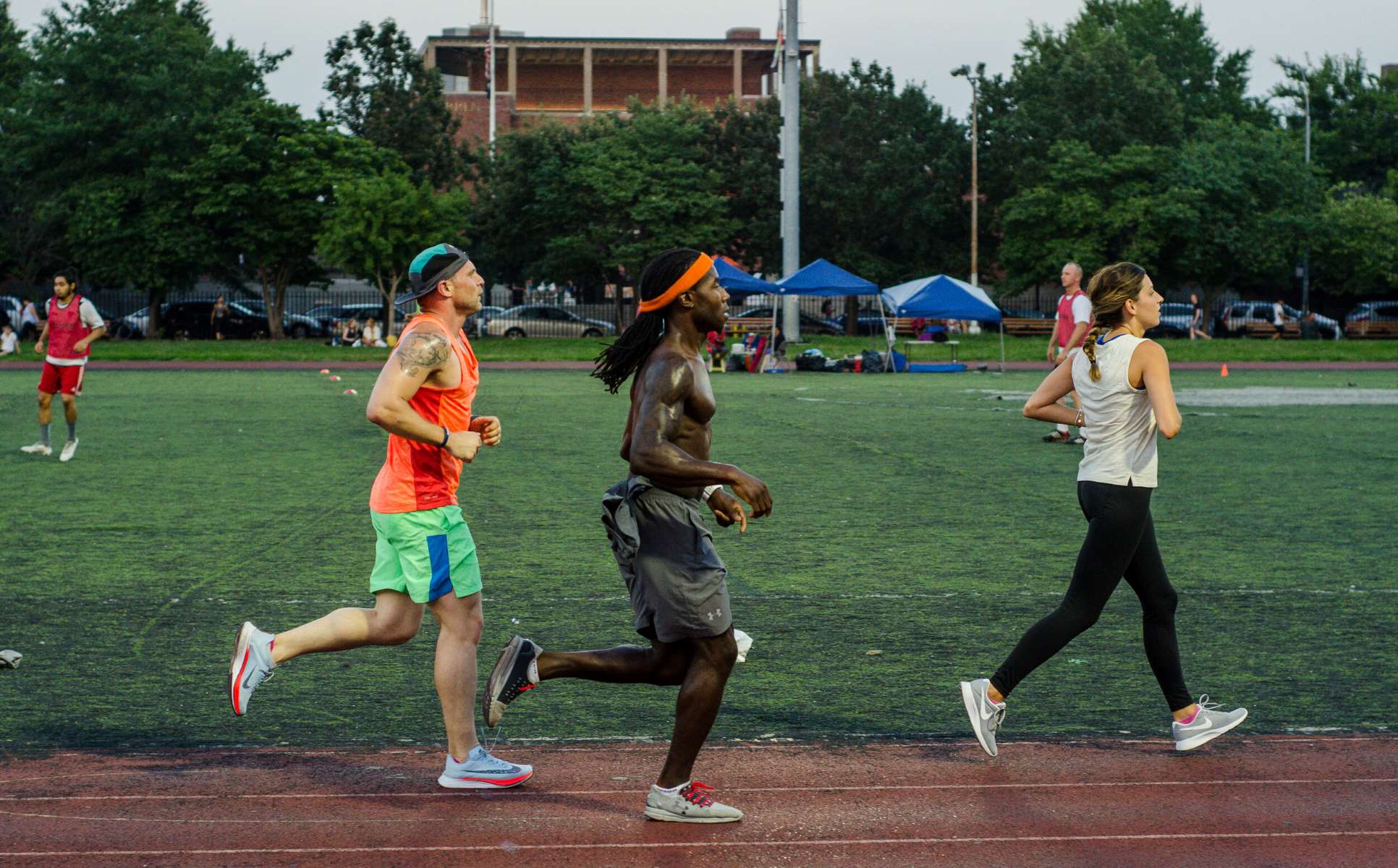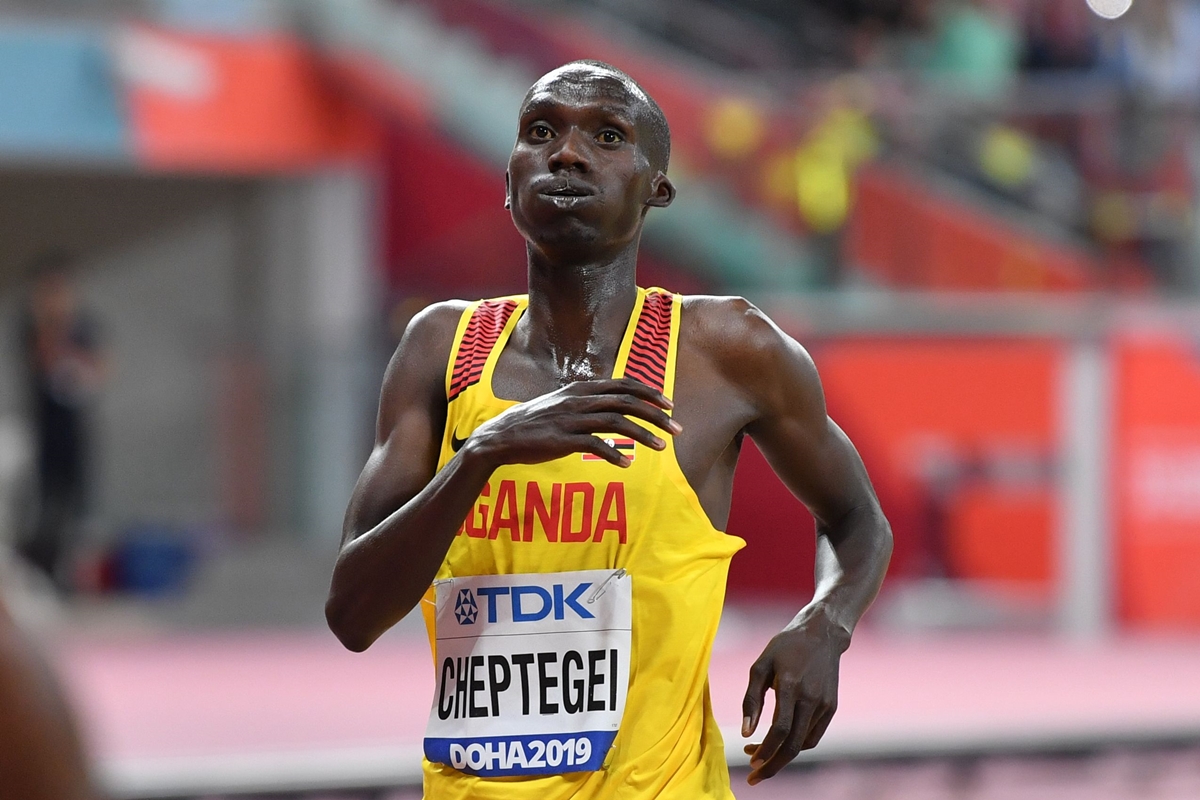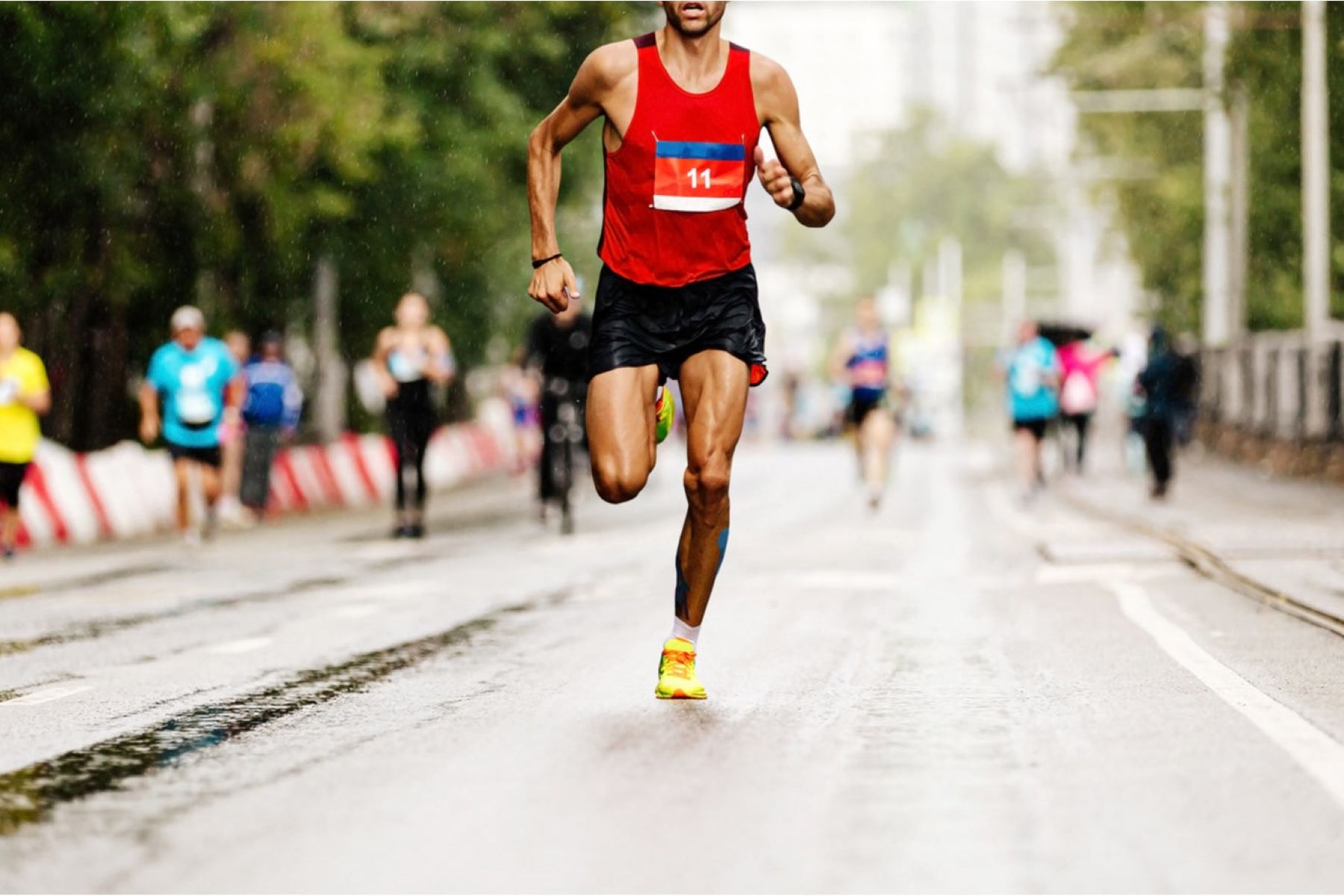

Featured
What Are Endurance Athletes
Modified: January 2, 2024
Learn about featured endurance athletes and their incredible perseverance and dedication in achieving extraordinary athletic feats. Discover the inspiring stories of these individuals who push their limits and inspire others to never give up.
Introduction
Endurance athletes are a unique breed of individuals who possess incredible physical and mental abilities. These athletes engage in activities that require stamina, strength, and unwavering determination. From marathon runners to long-distance swimmers, endurance athletes push their bodies to the limits in pursuit of personal achievement and triumph.
With a seemingly unlimited well of energy, endurance athletes participate in sports that challenge their bodies to endure prolonged periods of physical exertion. These individuals strive to test the boundaries of human performance, constantly pushing themselves to go further, faster, and longer.
The world of endurance sports is vast, encompassing a wide range of activities such as long-distance running, cycling, swimming, triathlons, ultramarathons, and more. Each discipline requires specific training, preparation, and strategic planning to excel and achieve personal goals.
This article aims to explore the world of endurance athletes, shedding light on their unique characteristics, the types of sports they participate in, and the challenges they face. Furthermore, we will delve into the training methods and preparation required for endurance events, as well as the crucial role of nutrition, hydration, and mental fortitude in supporting these athletes’ performance.
In addition, we will discuss the common injuries endured by endurance athletes and provide valuable insights into injury prevention strategies. Lastly, we will touch upon the importance of recovery and rest to optimize the performance and overall well-being of endurance athletes.
Definition of Endurance Athletes
Endurance athletes, also known as endurance sports enthusiasts, are individuals who participate in sports or activities that require a high level of cardiovascular endurance and stamina. These athletes engage in long durations of physical exertion, pushing their bodies to maintain a steady pace over extended periods.
The defining characteristic of endurance athletes is their ability to sustain intense effort over a prolonged period. Unlike sprinters or power athletes who focus on short bursts of explosive energy, endurance athletes rely on their aerobic capacity to sustain activity for an extended duration.
Endurance athletes can be found in various disciplines, including long-distance running, cycling, swimming, triathlons, cross-country skiing, and many more. These sports often involve covering vast distances or completing challenging courses that demand a high level of physical fitness and mental resilience.
What sets endurance athletes apart is their ability to endure physical discomfort, mental fatigue, and the relentless pursuit of their goals. They possess the determination and mental fortitude to overcome physical and mental barriers, pushing themselves beyond their limits.
It is important to note that being an endurance athlete is not solely determined by participating in a specific sport. Rather, it is a mindset and dedication to training and pushing oneself to achieve and exceed personal limits. Endurance athletes come from all walks of life and can be found pursuing their passion for endurance sports at all levels, from recreational enthusiasts to elite athletes.
Furthermore, the term “endurance athlete” is not limited to professionals or competitive athletes. Anyone who engages in regular training and participates in endurance sports can consider themselves an endurance athlete. The journey of an endurance athlete is about personal growth, self-discovery, and the quest for pushing boundaries.
Characteristics of Endurance Athletes
Endurance athletes possess a unique set of characteristics that enable them to excel in their chosen sports. These characteristics go beyond physical attributes and extend into the realm of mental resilience, discipline, and determination. Here are some key traits commonly found in endurance athletes:
- High Aerobic Capacity: Endurance athletes have a well-developed aerobic system, allowing them to efficiently utilize oxygen and produce energy over a prolonged period. This enables them to maintain a steady pace and perform at a high level without experiencing excessive fatigue.
- Mental Resilience: Endurance athletes have a strong mental ability to overcome challenges, push through pain, and stay focused during long and grueling workouts and races. They have a resilient mindset, knowing that they can endure temporary discomfort for long-term gains.
- Discipline: Endurance athletes understand the importance of consistent training and sticking to a structured program. They are disciplined in following their training schedules, even when faced with distractions or obstacles.
- Goal-Oriented: Endurance athletes are driven by goals and constantly strive to improve their performance. They set specific, measurable targets and work relentlessly towards achieving them, whether it’s finishing a race, setting a personal record, or qualifying for a prestigious event.
- Patience: Endurance athletes understand that progress takes time and are willing to put in the necessary effort and patience to see long-term improvements. They appreciate the journey and embrace the incremental gains along the way.
- Self-Motivation: Endurance athletes possess a high level of self-motivation. They are internally driven to push themselves beyond their comfort zones and are not solely reliant on external rewards or recognition.
- Tolerance for Discomfort: Endurance athletes have a high tolerance for physical discomfort and are comfortable being uncomfortable. They understand that discomfort is a natural part of the process and are willing to endure it to achieve their goals.
- Resilience to Setbacks: Endurance athletes understand that setbacks and failures are a part of the journey. They bounce back from setbacks, learn from their mistakes, and use them as opportunities for growth and improvement.
- Adaptability: Endurance athletes are adaptable and can adjust their training to different conditions and environments. They can handle unforeseen circumstances, such as changes in weather or race conditions, and still perform at their best.
- Passion for the Sport: Endurance athletes have a deep love and passion for their chosen sport. They genuinely enjoy the process of training and competing, finding fulfillment in the journey as much as the end result.
These characteristics enable endurance athletes to continually surpass their limits, achieve their goals, and find personal fulfillment in their pursuit of endurance sports.
Types of Endurance Sports
Endurance sports encompass a wide range of activities that demand physical and mental stamina. These sports require athletes to sustain prolonged periods of exertion, often covering long distances or enduring challenging conditions. Here are some common types of endurance sports:
- Long-Distance Running: Long-distance running includes activities such as marathons, ultramarathons, and trail running. Runners strive to cover extensive distances on various terrains, testing their endurance and mental fortitude.
- Cycling: Cycling includes road cycling, mountain biking, and endurance cycling events. Cyclists pedal for extended periods, tackling hilly terrains or long distances. Races like the Tour de France are renowned for their rigorous demands on endurance athletes.
- Swimming: Endurance swimming involves long-distance swimming in open water or pool settings. Open-water swimming events, such as triathlons, require athletes to swim in open bodies of water, often covering several kilometers.
- Triathlon: Triathlons combine swimming, cycling, and running into one event. Participants must excel in all three disciplines, navigating various distances and sometimes transitioning between them.
- Cross-Country Skiing: Cross-country skiing involves traversing long distances on skis, typically in snowy conditions. Endurance is a critical component as skiers propel themselves for extended periods, often competing in races or backcountry expeditions.
- Rowing: Rowing, specifically in endurance events like regattas or long-distance rowing races, demands sustained effort and coordination. Rowers propel boats over significant distances, relying on both physical stamina and teamwork.
- Hiking: While not a competitive sport in itself, long-distance hiking or trekking requires endurance. Trekkers embark on multi-day expeditions, carrying heavy backpacks and traversing challenging terrains.
- Ironman: The Ironman triathlon is considered one of the ultimate endurance challenges. It comprises a 2.4-mile swim, 112-mile bike ride, and a full marathon (26.2 miles) run.
These endurance sports offer athletes a platform to showcase their physical and mental capabilities while providing opportunities for personal growth, competition, and camaraderie.
Training and Preparation for Endurance Events
Training and preparation play a crucial role in the success of endurance athletes. To excel in endurance events, athletes must follow a well-structured training program and prepare both physically and mentally. Here are key aspects of training and preparation for endurance events:
Build a Base: Endurance training typically begins with building a solid aerobic base. This involves consistent, low-intensity workouts to improve cardiovascular fitness and increase endurance capacity. Long, steady-paced runs, rides, or swims form the foundation of base training.
Progressive Overload: Endurance athletes gradually increase the training volume and intensity to challenge their bodies and stimulate adaptation. This progressive overload principle helps improve stamina and prepares athletes for the demands of endurance events.
Interval Training: Interval training incorporates bouts of high-intensity efforts interspersed with periods of recovery. These structured intervals help improve speed, efficiency, and lactate threshold, enhancing overall performance.
Specificity: Tailoring training to the specific demands of the chosen endurance sport is essential. For example, a marathon runner will focus on long-distance running, while a triathlete will train in each discipline (swimming, cycling, and running) to improve their overall race performance.
Cross-Training: Incorporating cross-training activities can enhance overall fitness, prevent overuse injuries, and provide mental variety. Activities like strength training, yoga, or Pilates can improve muscular strength, flexibility, and core stability.
Mental Preparation: Endurance events require mental resilience and focus. Athletes often incorporate visualization techniques, positive self-talk, and psychological strategies to cultivate mental strength and prepare for the mental challenges encountered during races.
Testing and Monitoring: Regular assessments, such as fitness tests or performance benchmarks, can help gauge progress and identify areas for improvement. Monitoring training data, heart rate variability, or using wearable technology can provide valuable insights for adjusting training plans.
Recovery and Rest: Adequate recovery is essential to avoid overtraining and injuries. Rest days, active recovery sessions, proper nutrition, hydration, and quality sleep aid in recovery and allow the body to adapt to training stress.
Race Day Preparation: Preparing for endurance races involves developing race strategies, familiarizing oneself with the racecourse, organizing equipment and nutrition plans, and practicing race-day routines to ensure a smooth and efficient experience.
It is important for endurance athletes to work with coaches, trainers, or experienced athletes to structure their training, set realistic goals, and develop tailored preparation plans. This guidance can optimize training efforts and ensure athletes are well-prepared for the physical and mental rigors of endurance events.
Nutrition and Hydration for Endurance Athletes
Nutrition and hydration play a vital role in the performance and overall well-being of endurance athletes. Proper fueling and hydration strategies are essential to sustain energy levels, optimize performance, and aid in recovery. Here are key considerations for nutrition and hydration for endurance athletes:
Caloric Intake: Endurance athletes have higher caloric requirements due to the energy demands of their training and events. They need to consume enough calories to support their activity levels and maintain optimal performance. Working with a sports nutritionist or dietitian can help determine individual calorie needs.
Carbohydrates: Carbohydrates are the primary fuel source for endurance activities. Athletes should consume complex carbohydrates like whole grains, fruits, vegetables, and legumes to provide sustained energy. Adequate carbohydrate intake before, during, and after workouts is crucial to maintain glycogen stores and promote recovery.
Protein: Protein is essential for muscle repair and growth. Endurance athletes should consume adequate protein sources like lean meats, dairy products, legumes, and plant-based protein options to support recovery and prevent muscle breakdown.
Fat: While carbohydrates are the primary fuel source, incorporating healthy fats like avocados, nuts, seeds, and fatty fish can provide essential nutrients and contribute to satiety. However, it’s important to balance fat intake and prioritize carbohydrates for optimal endurance performance.
Hydration: Proper hydration is crucial for endurance athletes to prevent dehydration and maintain performance. Fluid needs vary depending on individual factors and exercise intensity, but as a general guideline, athletes should aim to consume enough fluids before, during, and after exercise to replace lost fluids and electrolytes.
Electrolytes: Electrolytes, including sodium, potassium, magnesium, and calcium, help maintain fluid balance and support muscle function. Athletes can replenish electrolytes through sports drinks or consume electrolyte-rich foods like bananas, oranges, and sports gels during prolonged endurance activities.
Timing: The timing of meals and snacks is important to ensure proper fueling. Consuming a balanced meal 2-4 hours before a training session or race provides sustained energy. During longer endurance events, consuming carbohydrates and fluids regularly at planned intervals can help maintain energy levels and prevent bonking.
Recovery Nutrition: After intense endurance activities, consuming a combination of carbohydrates and protein within the first 30-60 minutes aids in muscle glycogen replenishment and repair. Including foods like chocolate milk, yogurt, or a protein shake can help kickstart the recovery process.
Individualization: Every athlete may have different nutritional needs and preferences. Experimenting with different foods and hydration strategies during training can help identify what works best for each individual. Seeking guidance from a sports nutrition professional can fine-tune nutrition plans based on specific goals, dietary restrictions, and preferences.
Proper nutrition and hydration are essential components of an endurance athlete’s training and performance. Taking the time to understand and implement effective nutrition strategies can significantly contribute to improved performance, enhanced recovery, and overall well-being.
Mental and Psychological Aspects of Endurance Athletes
Endurance sports not only test athletes physically but also challenge them mentally and psychologically. Success in endurance events often relies on the ability to overcome mental barriers, push through fatigue, and maintain focus. Here are key aspects of the mental and psychological aspects of endurance athletes:
Mental Resilience: Endurance athletes develop mental resilience to navigate the physical and mental challenges they encounter during training and races. They cultivate the ability to stay focused, persevere through difficult moments, and maintain a positive mindset, even when faced with adversity.
Motivation and Goal Setting: Endurance athletes are driven by intrinsic motivation, setting personal goals and striving to achieve them. These goals provide a sense of purpose, direction, and determination to overcome obstacles on the journey to success.
Visualization: Many endurance athletes utilize visualization techniques to mentally prepare for upcoming events. They vividly imagine themselves overcoming challenges and performing at their best, enhancing confidence and reducing race-day anxiety.
Positive Self-Talk: Endurance athletes practice positive self-talk, using affirmations and encouraging words to boost confidence and maintain focus during challenging moments. Positive self-talk helps to combat negative thoughts and self-doubt, enabling athletes to push beyond their perceived limits.
Mindfulness and Mental Focus: Being present in the moment and maintaining mental focus is essential for endurance athletes. Practicing mindfulness techniques, such as meditation or deep breathing exercises, helps athletes stay focused, regulate emotions, and cope with the physical demands of their sport.
Managing Discomfort: Endurance events often involve encountering physical discomfort, such as fatigue, muscle soreness, or extreme weather conditions. Endurance athletes learn to accept and manage discomfort, using mental strategies to reframe pain as a temporary sensation and embrace the challenge ahead.
Race Strategy and Adaptability: Endurance races require athletes to make split-second decisions, adjust their pace, and adapt to changing conditions. Mental agility, strategic thinking, and the ability to embrace unexpected challenges are integral to success.
Competitive Mindset: While endurance athletes may compete against others, they often compete with themselves, striving for personal bests and surpassing previous limits. They focus on self-improvement rather than solely comparing themselves to others, fostering a healthy and competitive mindset.
Emotional Regulation: Endurance athletes experience a range of emotions during training and competition, including excitement, frustration, and fatigue. Developing emotional regulation skills helps athletes maintain composure, manage stress, and perform at their best under pressure.
Enjoyment and Satisfaction: Endurance athletes find joy and satisfaction in the process of pushing their limits and achieving their goals. They embrace the journey, savoring the small victories along the way, and deriving fulfillment from the challenges they overcome.
These mental and psychological aspects are critical for endurance athletes to maintain focus, resilience, and determination throughout their training and competition. Nurturing a strong mental game can significantly impact an athlete’s performance and overall satisfaction in their chosen endurance sport.
Common Injuries and Injury Prevention for Endurance Athletes
Endurance athletes are no strangers to the risk of injuries due to the repetitive nature and high demands of their sport. Understanding common injuries and adopting proactive injury prevention strategies are crucial for maintaining long-term participation and performance. Here are some common injuries and ways to prevent them for endurance athletes:
Overuse Injuries: Overuse injuries, such as tendinitis, stress fractures, and muscle strains, are common among endurance athletes. They occur due to the repetitive nature of the sport and inadequate rest and recovery. Gradually increasing training volume, incorporating rest days, and cross-training can help prevent overuse injuries.
Runner’s Knee: Runner’s knee, medically known as patellofemoral pain syndrome, is a common knee injury among runners and endurance athletes. Strengthening the quadriceps and hip muscles, as well as maintaining proper running mechanics and using appropriate footwear, can help prevent this condition.
Achilles Tendonitis: Achilles tendonitis, characterized by pain and inflammation in the Achilles tendon, is a common injury among endurance athletes. Gradual training progressions, proper footwear, and heel cord stretches can aid in preventing this injury.
Shin Splints: Shin splints, or medial tibial stress syndrome, result in pain and inflammation along the shin bone. Strengthening the calf muscles, gradually increasing training intensity, and avoiding sudden changes in running surfaces can help prevent this condition.
IT Band Syndrome: IT (Iliotibial) band syndrome causes pain on the outside of the knee or hip due to inflammation of the IT band. Strengthening hip muscles, using proper footwear, and incorporating rest and recovery days can help prevent this condition.
Plantar Fasciitis: Plantar fasciitis is characterized by heel pain caused by inflammation of the plantar fascia. Wearing supportive footwear, stretching the calf muscles and the plantar fascia, and avoiding sudden changes in running surfaces can help prevent this condition.
Hydration-Related Issues: Endurance athletes are at risk of dehydration and heat-related illnesses. Proper hydration before, during, and after training sessions and races is essential to prevent these conditions. Monitoring fluid intake and adjusting as per individual needs and environmental conditions is vital.
Injury Prevention Strategies:
- Gradually increase training volume and intensity to allow the body to adapt.
- Include strength training exercises to improve muscular balance and stability.
- Ensure proper warm-up and cool-down routines before and after training sessions.
- Listen to the body and address any signs of pain or discomfort promptly.
- Incorporate flexibility and mobility exercises to maintain optimal range of motion.
- Monitor training load and schedule regular rest and recovery days.
- Use proper footwear and equipment that provide adequate support and cushioning.
- Seek professional advice for gait analysis and biomechanical evaluation if needed.
- Follow a balanced nutrition plan to support overall well-being and recovery.
By implementing injury prevention strategies and paying attention to early warning signs, endurance athletes can minimize the risk of injuries and maintain consistent performance in their chosen sport. It is essential to prioritize self-care and seek appropriate medical attention when necessary to promote long-term athletic success and well-being.
Recovery and Rest for Endurance Athletes
Recovery and rest are essential components of an endurance athlete’s training regimen. Adequate recovery allows the body to repair, adapt, and replenish energy stores, reducing the risk of injury and optimizing performance. Here are key considerations for recovery and rest for endurance athletes:
Rest Days: Incorporating regular rest days into the training schedule is vital for recovery. Rest days allow the body to repair damaged tissues and replenish glycogen stores, reducing the risk of overuse injuries and mental burnout. These rest days can involve complete rest or low-intensity activities such as gentle yoga or walking.
Sleep: Quality sleep is crucial for optimal recovery and performance. During sleep, the body releases growth hormone, repairs tissues, and consolidates learning and memory. Endurance athletes should aim for 7-9 hours of uninterrupted sleep each night and establish a consistent sleep routine.
Nutrition for Recovery: Proper nutrition plays a critical role in the recovery process. Consuming a combination of carbohydrates and protein within 30-60 minutes after a workout helps replenish glycogen stores and aids in muscle repair. Including fruits, vegetables, lean proteins, and healthy fats in regular meals supports overall recovery and provides essential nutrients.
Hydration: Hydration is essential for recovery, as it helps transport nutrients to the muscles and facilitates waste removal. Endurance athletes should ensure adequate fluid intake throughout the day and replenish fluids lost during workouts or races.
Active Recovery: Light, low-intensity activities can promote recovery by increasing blood flow, loosening muscles, and reducing stiffness. Engaging in activities such as swimming, cycling, or gentle stretching can assist in flushing out metabolic waste, supporting tissue repair and recovery.
Massage and Foam Rolling: Massage and foam rolling can help alleviate muscle soreness and tightness, improving range of motion and promoting recovery. These techniques can enhance blood flow, reduce muscle tension, and break up adhesions or knots in the muscles.
Cross-Training: Incorporating cross-training activities can provide a break from the repetitive movements of endurance training while still maintaining fitness. Activities such as swimming, yoga, or strength training can help improve overall athleticism, prevent overuse injuries, and provide mental variety.
Periodization: Implementing proper periodization in training involves planning training cycles that alternate between building intensity and volume and allowing for recovery periods. This helps prevent overtraining and optimize performance during key events or races.
Stress Management: Endurance athletes should address stress levels and incorporate stress management techniques into their routine. Techniques such as mindfulness, meditation, deep breathing exercises, or engaging in enjoyable activities outside of training can help reduce overall stress levels and promote recovery.
Listening to the Body: Paying attention to the body’s signals is crucial for recovery. If experiencing excessive fatigue, persistent pain, or other signs of overtraining, athletes should adjust their training load, seek professional guidance, or consult a healthcare provider when necessary.
By prioritizing recovery and rest, endurance athletes create a solid foundation for continued progress and success in their sport. Recognizing the importance of balancing intense training with adequate recovery promotes long-term health, sustainability, and enjoyment of endurance activities.
Conclusion
Endurance athletes are a special breed of individuals who possess remarkable physical and mental capabilities. Engaging in sports that demand stamina, strength, and unwavering determination, these athletes push their bodies to the limits in pursuit of personal achievement and triumph.
In this article, we have explored the world of endurance athletes, delving into their unique characteristics, the types of sports they participate in, and the challenges they face. From long-distance runners and cyclists to swimmers and triathletes, endurance athletes showcase unparalleled levels of perseverance and resilience.
We have discussed the importance of structured training and preparation in the pursuit of endurance events. Progressively increasing training volume, incorporating interval sessions, and focusing on specific sports-related skills are essential for achieving optimal performance.
Nutrition and hydration have been highlighted as vital factors for endurance athletes. Proper fueling with carbohydrates, proteins, and fats, along with adequate hydration, ensures sustained energy levels, enhances performance, and supports overall well-being.
The mental and psychological aspects of endurance athletes cannot be overlooked. Mental resilience, goal setting, visualization, and positive self-talk are critical elements that help athletes overcome challenges, stay focused, and maintain motivation during training and races.
Moreover, we have explored common injuries experienced by endurance athletes and strategies for injury prevention. Prioritizing rest days, incorporating active recovery, maintaining proper form, and gradually increasing training loads can aid in minimizing the risk of overuse injuries.
Lastly, we have emphasized the significance of recovery and rest for endurance athletes. Adequate rest, quality sleep, proper nutrition, and stress management techniques are essential to optimize recovery, prevent burnout, and sustain long-term participation and performance.
In conclusion, endurance athletes exemplify the human spirit’s resilience, determination, and pursuit of personal growth. Their commitment to pushing boundaries inspires us all to strive for greatness in our own endeavors. By understanding the unique aspects of endurance sports and adopting effective training, nutrition, and recovery strategies, athletes can unlock their potential to achieve extraordinary feats.
